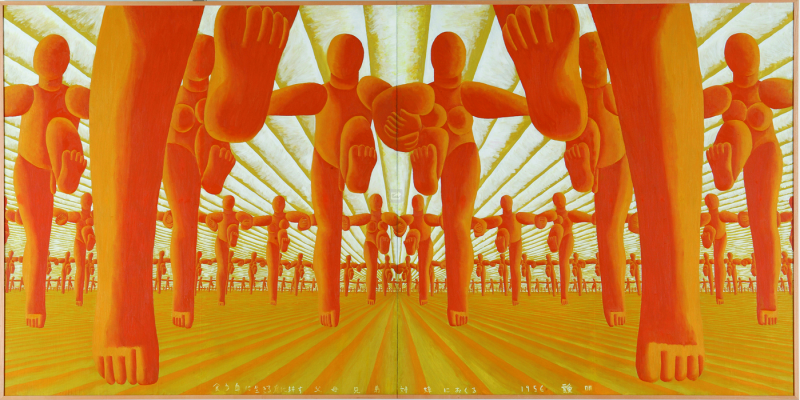I don’t often think about technology’s impact on art, and when I do, I typically think of technology as a medium or materials, a la Jan Švankmajer’s light bulbs, wire, and mass-produced doll heads. In fact, short of anthropological masks and paintings, it’s rare to visit an art museum and consider, say, the impact of the invention of the television or maybe the impact of a few bombs capable of total nuclear annihilation. However, that’s exactly what’s on display at the Museum of Modern Art.

You can’t see it here, but there’s a suitcase full of skulls up above. I wonder if that means anything…
In Tokyo: 1955–1970, Doryun Chong (associate curator) has put together an interesting and thoughtful look into the post-reconstruction period of Japan. Over 200 paintings, sculptures, photographs, and videos are all on display from more than 60 public and private collections around the world.
Because most of the artists on display experienced the aftermath of Fat Man and Little Boy, they were mentally branded with the frailty of life and organic tissue. Thus, many of these works (especially the earlier half of the collection) showcase human and animal forms in intriguing and unique ways, the most well-known of which is the Gutai group’s use of body as living art. As to be expected, there are also many political statements throughout the work, but what I find deeper and more intriguing in this collection is that lingering perspective of the importance and transience of the human body.
As art is subjective, I won’t delve into further reflections about the exhibit, but I will say that this collection gives a fascinating view into the minds of a people creatively flourishing after a catastrophe. If you’re living in or visiting the New York area soon, Tokyo: 1955–1970 is definitely worth your time and contemplation.


Comments are closed.